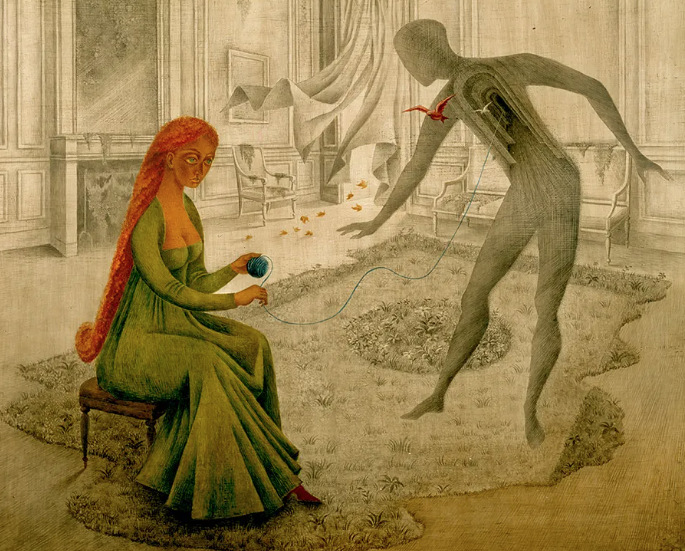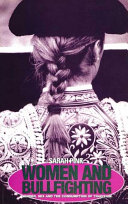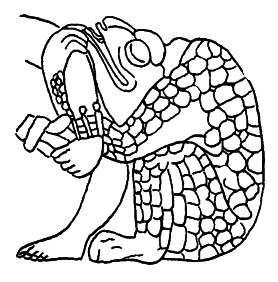中米・カリブにおける感覚のエスノグラフィー
Empirical study on the ethnography of the senses in Central America and the Caribbean

中米・カリブにおける感覚のエスノグラフィー
Empirical study on the ethnography of the senses in Central America and the Caribbean

このページは滝奈々子が研究代表者であった科学研究費 補助金・挑戦的研究(萌芽)「中米・カリブにお ける感覚のエスノグラフィーに関する実証研究」21K18363、の研究分担者である池田が 運営する研究連絡サイトである。なおメンバーは、滝 奈々子・池田光穂・冨田晃・牛島万である(なお、これに類似するより上位のページ「感覚経験の人類学」があるので参照されたい:リンク集「感覚現象の理解」)。
旧クレジット:滝奈々子・池田光穂・冨田晃・
牛島万「中米・カリブにおける感覚のエスノグラフィーに関する実証研究」
| 本研究は、中米グアテマラ共和国とプエルトリコ、ホンジュ
ラスをフィールドとして、おもにマヤ系ならびにガリフナ民族とメスティソにおける音楽・ダンス・絵画や写真等の表象芸術を中心としたポピュラーカルチャー
現象に焦点を当てた「感覚のエスノグラフィー」の記述法の開発に挑戦する。すなわち、従来の書記法に加えて「感覚のエスノグラフィー」という観点を取り入
れ、先住民社会におけるポピュラーカルチャーとりわけ、音楽・食・絵画・写真・ダンスなどの民族表象が、外部社会との接続により様々な文化要素の世界循環
するさまを、先住民社会ならびにその民族表象を受け入れる若者を中心とした感覚の語りや経験に焦点をあてて考察する。 |
感覚経験の人類
学とは、感覚/感性のエスノグラフィーの記述を試み、そこから得られるデータを比較検証し、感覚経験の経験主義的
理解を深める理論的貢献に挑戦する分野である。
感覚のエスノグラ フィーとは、David Howes(2005) によるとセンススケープ (sensescape)の描写すなわち書記法のことである。エスノグラフィーとは、 フィールドワー クと いう経験的調査手法を通して、人々の社会生活について具体的 に書かれた「体系的体裁によって」整えられた記述のことである。「民族誌」は、完全な同義語である。したがって、エスノグラフィーとは、近代社会における 「書記法・ライティング(writing)」に関わっている。
センススケープ(sensescpe)とはアルジュン・アパデュライ(Arjun Appadurai, 1996 )の5つのスケープ(ethno-, media-, techno-, finance-, ideo-,)[2004:69] に加えたモダニティの第6のスケープと称されるものである。この研究は民族音楽のSteven Feld, 視覚表象のOliver Sacks, メディアのMarshall McLuhan らによって先鞭がつけられ、記憶における Susan Stewart, シャーマンのフェミニニティにおけるSusan Stewart、料理における Lisa Law, 匂い経験の Jim Drobnick などの野心的な研究が続いている。センススケープの説明は下記を参照してください。
★研究成果の概要
この研究は中米・カリブにおける音楽・ダンス・絵画や写真等の表象芸術を中心としたポピュ ラーカルチャー現象に焦点を当てD・ハウズのセンススケープを描写する「感覚のエスノグラフィー」の開発に挑戦したものである。グアテマラではケクチ先住 民の民族音楽を演奏者の身体感覚と伝統の継承から分析し、カリブ海沿岸のガリフナ文化では絵画描写と表現技法とその消費を明らかにし、プエルトリコではレ ゲトンとサルサという音楽をそれぞれアフロ感覚とソネオの口承伝統との交錯という点を分析しその成果を発表した。
This study challenged the development of an ‘ethnography of the senses’ that describes D. Howes' sensescapes, focusing on popular culture phenomena in the Central America and the Caribbean, particularly in the representational arts such as music, dance, painting and photography. In Guatemala, we analyzed the folk music of the Q'ueq'chi indigenous people in terms of the performers' physical sensations and the transmission of traditions; in the Garifuna culture of the Caribbean coast, we clarified pictorial depiction and expressive techniques and their consumption; and in Puerto Rico, we analyzed the music of reggaeton and salsa in terms of their intersection with the Afro sensibility and Soneo oral tradition, respectively, and presented the results in various academic media.
★研究成果の社会的意義
感覚の人類学研究は、身体論、現象学、宗教、移民などとそこから派生する固有のテーマをも
ち、その対象地域は、西洋世界あるいは非工業化していない非西洋社会を対象にしてきた。この研究では先住民音楽のインターネットでの情報発信、伝統絵画で
はなくペイントをつかった商業あるいは非商業的な壁画、レゲトンやサルサなどローカルな演奏文脈からメディアを通した情報発信とその消費など、をそれぞれ
の感覚経験とどのように交錯するかについて考察している。ネット社会における情報の圧縮と、携帯端末というメディアを通した直接感覚経験を直結した紋切り
型でない分析方法を提案している点で斬新である。
| Ethnoscape |
Ethnoscape The ethnoscape refers to human migration, the flow of people across boundaries. This includes migrants, refugees, exiles, and tourists, among other moving individuals and groups, all of whom appear to affect the politics of (and between) nations to a considerable degree.[2]: 297 [6] Ethnoscapes allow for one to recognize that their notions of space, place, and community have become much more complex—indeed, a ‘single community’ may now be dispersed across the globe.[7][2]: 297 Appadurai claims that this is not to say there are no relatively stable communities and networks of kinship, friendship, work, and leisure, as well as of birth, residence, and other filial forms. Rather, it highlights that the shape of these stabilities is warped by human motion, as more people deal with the realities of having to move or the desires of wanting to move.[2]: 297 Tourism, in particular, generally provide people from developed countries with contact to people in the Developing World.[3] Appadurai, Arjun (1990). "Disjuncture and Difference in the Global Economy." Public Culture 2(2):1–24. |
エスノスケープ エスノスケープとは、人間の移動、つまり境界を越えた人の流れのことであ る。これには移民、難民、亡命者、観光客など移動する個人や集団が 含まれ、その全員が国家の(そして国家間の)政治にかなりの程度影響を与えているように見える[2]: 297 [6] (→移民・移動の研究ガイド)。 エスノスケープは、空間、場所、コミュニティに関する概念がより複雑になってい ることを認識させるものであり、実際、「単一のコミュニティ」は今や世界中 に分散しているかもしれない[7][2]: 297 アパデュライは、親族、友情、仕事、レジャー、出生、居住、その他の親族の形態と同様に比較的安定したコミュニティやネットワークが存在しないというわけ ではないとしている。むしろ、移動しなければならない現実や移動したいという願望を抱く人が増えるにつれて、こうした安定性の形が人間の動きによってゆが められることを強調している[2]: 297。 特に観光は、一般的に先進国の人々に発展途上国の人々との接触を提供する[3]。 Appadurai, Arjun (1990). "Disjuncture and Difference in the Global Economy." Public Culture 2(2):1–24. |
| Mediascape | Mediascape The mediascape refers to the scope of electronic and print media in global cultural flows; it refers both to the distribution of the electronic capabilities to produce and disseminate information (newspapers, Magazines, television, Films, etc.), as well as to "the images of the world created by these media." Such mediascapes provide vast deposits of images, narratives, and ethnoscapes to viewers, profoundly mixing the "world of commodities" and the "world of news and politics."[2]: 298–9 In particular, advertising can directly impact the landscape (in the form of posters and billboards) and also subtly influence—through persuasive techniques and an increasingly pervasive presence—the way that people perceive reality. The term mediascape predates Appadurai's use; it was first used in trade by the American company Mediascape Corporation, formed in 1992, for the purpose of delivering rich media through the Internet and Web. The corporation is the U.S. owner of the federal trademark for use of that mark in relation to multimedia products in commerce. The term mediascape may also describe visual culture. For example, "the American mediascape is becoming increasingly partisan" or simply to denote "what's on" as in "a quick survey of the British mediascape shows how much Channel 4 has lost its way". It is also used as a generic term to describe a digital media artifact where items of digital media are associated with regions in space and can then be triggered by the location of the person experiencing the media. Thus, in a mediascape, a person may walk around an area and as they do so they will hear digitally stored sounds associated with different places in that area.[citation needed] |
メディアスケープ メディアスケープとは、グローバルな文化の流れの中で、電子メディアと印刷メディアの範 囲を指す。それは、情報を生産し広める電子的能力(新聞、雑誌、テ レビ、映画など)の分布と、"これらのメディアによって作られる世界のイメージ "の双方を指す。こうしたメディアスケープは,膨大なイメージ,物語,エスノスケープを視聴者に提供し,「商品の世界」と「ニュースや政治の世界」を深く 混在させる[2]: 298-9 特に広告は,(ポスターやビルボードという形で)景観に直接影響を与えるだけでなく,説得力のある手法とますます広まりつつある存在感を通じて,人々の現 実の捉え方に微妙な影響を与えることができる。 メディアスケープという言葉は、アパデュライが使う以前からあった。1992年に設立されたアメリカのメディアスケープ社が、インターネットやウェブを通 じてリッチメディアを配信する目的で、取引上初めて使った言葉である。同企業は、商取引におけるマルチメディア製品に関連した商標の使用に関する連邦商標 の米国における所有者である。 メディアスケープという用語は、視覚文化を表すこともある。例えば、「アメリカのメディアスケープはますます党派的になっている」、あるいは「イギリスの メディアスケープを簡単に調査すると、チャンネル4がどれほど道を誤ったかがわかる」のように、単に「何が放送されているか」を示すために使われる。ま た、デジタルメディアのアイテムが空間の領域と関連付けられ、メディアを体験する人の位置によってトリガーされることができるデジタルメディアアーティ ファクトを表す総称としても使われる。そのため、メディアスケープでは、人がある領域を歩き回ると、その領域内のさまざまな場所に関連付けられたデジタル 保存された音が聞こえてくる[citation needed]。 |
| Technoscape | Technoscape The technoscape is the flow of technology (mechanical and informational) and the ability to move such technology at rapid speeds.[6]: 97 The flow of technology especially increases as the pace of technological innovation increases.[3] Accordingly, the introduction of new technology (e.g., the Internet) increases cultural interactions and exchanges. For example, smartphones are moved across boundaries and radically affect day-to-day life for individuals all along the commodity chain.[3] |
テクノスケープ テクノスケープとは、技術(機械的・情報的)の流れと、そうした技術を高速で動かす能力のことである[6]: 97 技術の流れは、特に技術革新のスピードが上がるとともに増加する[3]。 したがって、新しい技術(例えば、インターネット)の導入は、文化的な相互作用と交流を増加させる。例えば、スマートフォンは境界を越えて移動し、商品連 鎖に沿ったすべての個人の日常生活に根本的に影響を与える[3]。 |
| Financescape | Financescape Financescape refers to the flow of money and global business networks across borders.[3][1] Appadurai poses that when considering the financescape framework, one must consider how global capital today moves in an increasingly fluid and non-isomorphic manner, thus contributing to an overall unpredictability of all the five aspects of global cultural flows as a whole.[6] The fluidity of capital has been expounded on further by sociologists such as Anthony Giddens, who, in his 1999 BBC Reith lecture on globalization, claims that the advent of electronic money has rendered the transfer of capital and finance around the world subject to an increasingly easy process that posits a major paradigm shift. Giddens suggests that this ease has the potential to destabilize what would be considered prior as stable economies. Today, the global transfer of money has only accelerated in pace, with transactions in various large, international finance hubs (e.g. NYSE) have almost immediate effects on economies around the globe.[3] |
フィナンスケープ フィナンスケープとは国境を越えた貨幣とグローバルなビジネスネットワークの流れを指す[3][1] アパデュライはフィナンスケープの枠組みを考えるとき、今日のグローバル資本がいかに流動的で非同型的に動いており、それゆえにグローバルな文化の流れの 5つの側面すべての予測不可能性に寄与しているかを考慮しなければならないと提起している[6]。 資本の流動性はアンソニー・ギデンズのような社会学者によってさらに説明されており、彼は1999年のグローバル化に関するBBCのリース講義で、電子マ ネーの出現によって世界中で資本と金融がますます容易なプロセスの対象となり、大きなパラダイムの転換を仮定していると主張している[7]。ギデンズは、 この容易さが、従来は安定した経済と考えられていたものを不安定にする可能性を示唆している。 今日、世界的な資金の移動は加速しており、様々な大規模な国際金融ハブ(例えばNYSE)での取引は、世界中の経済にほとんど即座に影響を与える[3]。 |
| Îdeoscape | Ideoscape The ideoscape is the flow of ideas and ideologies, and is composed of concepts, terms, and images. This movement of ideas can take place on a small-scale, such as an individual sharing their personal views on Twitter, or it can take place on a larger and more systematic level (such as missionaries).[3] The ideoscape is often political and usually has to do with the ideologies of states along with the counter-ideologies of movements explicitly oriented towards capturing state power *or a piece of it).[6] Ideoscapes therefore can consist of such ideas as "freedom, welfare, rights, sovereignty, representation, and democracy."[2]: 1–24 |
イデオスケープ イデオスケープとは、思想やイデオロギーの流れのことであり、概念、用語、イメージなどから構成される。この思想の動きは、個人がTwitterで個人的 な見解を共有するような小規模なものから、より大規模で組織的なレベル(宣教師など)で行われることもある[3]。 イデオスケープはしばしば政治的であり、通常は国家のイデオロギーと、国家権力*またはその一部を獲得することを明示的に指向する運動のカウンターイデオ ロギーに関係している[6]。 したがってイデオスケープは「自由、福祉、権利、主権、代表、民主」などの考えから構成されることができる[2]。 1-24 |
| https://en.wikipedia.org/wiki/Global_cultural_flows#Ethnoscape Appadurai, Arjun (1990). "Disjuncture and Difference in the Global Economy." Public Culture 2(2):1–24. |
||
| Sensescape | In David Howes’ anthropology of senses, sensescapes is defined as “the idea that the experience of the environment and of the other persons and things which inhabit the environment, is produced by a particular mode of distinguishing, valuing and combining the senses in the culture under study” (Howes 2005:143). An anthology by the philosopher Madalina Diaconu a.o., uses the term in the title “Senses and the city. An interdisciplinary approach to urban sensescapes” (2001). Surprisingly it does not seem to undergo any further definition in the book, though Diaconu do seem to encourage the same sensory revolution as Howes and Bunkse (Diaconu 2001:7, Howes 2005:1, Bunkse 2012:12). | デイヴィッド・ハウズの感覚人類学において、センススケープは「環境 と、その環境に住む他の人や物との経験は、研究対象の文化における感覚を区別し、評価 し、組み合わせる特定の様式によって生み出されるという考え」(Howes 2005: 143)と定義されている。哲学者のMadalina Diaconu a.o.によるアンソロジーでは、「Senses and the city」というタイトルでこの用語が用いられている。An interdisciplinary approach to urban sensescapes" (2001)というタイトルで使われている。しかし、ディアコヌはハウズやブンクセと同じ感覚革命を推奨しているように見える(Diaconu 2001:7, Howes 2005:1, Bunkse 2012:12)。しかし、ブンクセの場合、その概念は人類学的なものから、家としての風景に対する地理哲学的なアプローチへと移行している。 |
| https://sensescapesblog.wordpress.com/2014/10/06/from-landscape-to-sensescape/ |
||
| Soundscape |
A soundscape is a sound or
combination of sounds that forms or arises from an immersive
environment. The study of soundscape is the subject of acoustic ecology
or soundscape ecology. The idea of soundscape refers to both the
natural acoustic environment, consisting of natural sounds, including
animal vocalizations, the collective habitat expression of which is now
referred to as the biophony, and, for instance, the sounds of weather
and other natural elements, now referred to as the geophony; and
environmental sounds created by humans, the anthropophony through a
sub-set called controlled sound, such as musical composition, sound
design, and language, work, and sounds of mechanical origin resulting
from use of industrial technology. Crucially, the term soundscape also
includes the listener's perception of sounds heard as an environment:
"how that environment is understood by those living within it" and
therefore mediates their relations. |
サウンドスケー
プと
は、没入型環境(immersive
environment)を形成する、またはそこから生じる音や音の組み合わせのことである。サウンドスケープの研究は、音響生態学またはサウンドスケー
プ生態学の主題である。サウンドスケープとは、動物の鳴き声などの自然音、その集合体である生息域の表現はバイオフォニー、気象などの自然音はジオフォ
ニーと呼ばれ、人間が作り出す環境音は、作曲、サウンドデザイン、言語、作業、工業技術の使用による機械音などのコントロールサウンドと呼ばれるサブセッ
トからなる自然音響環境と呼ばれるものの両方を指している。また、サウンドスケープという言葉には、聴衆が聴いた音を環境として認識することも含まれてい
る。「その環境は、その中で生活する人々によってどのように理解されるか」、つまり彼らの関係を媒介するものである。 |
| https://en.wikipedia.org/wiki/Soundscape |
https://www.deepl.com/ja/translator |
●センススケープの説明( Lotus Lykke Skov による解説)
| From landscape to
sensescape Posted on October 6, 2014 by Lotus. What is a landscape? How do you relate to your landscape? How do landscapes affect us? Departing in phenomenology’s notion of the body and the world as inseparable, I approach the term landscape as an entrance to a specifically embodied conceptualization through the following three statements: https://sensescapesblog.wordpress.com/2014/10/06/from-landscape-to-sensescape/ |
ランドスケープからセンススケープへ 投稿日: 2014年10月6日 投稿者: ロータス ランドスケープとは何でしょうか?風景とどう関わっているのか?風景は私たちにどのような影響を与えるのでしょうか? 身体と世界は不可分であるという現象学の概念から出発し、私は以下の3つのステートメントを通じて、特に身体化された概念化の入り口として風景という言葉 にアプローチします。 |
| A) Landscape as relation. As the philosopher Christopher Tilley has pointed out, using the term landscape in a phenomenological perspective will appear antithetical to the conventional Western understanding, where landscape is “[…]implying separation and disinterested analytical observation, a particular way of seeing exemplified in the linear techniques of perspective developed in landscape painting since the Renaissance[…]” (Tilley 2004:24). A search in the Oxford Dictionary confirms that landscape is still first and foremost understood as a picture, a painting, a view, a scenery, a map, a background or simply just “the object of one’s gaze”, depicting a piece of mostly natural inland (www.oed.com). This understanding, argues Tilley, is turned around in a phenomenological idea of landscape defined as “perceived and embodied sets of relationships between places, a structure of human feeling, emotion, dwelling, movement and practical activity within a geographical region which may or may not possess precise topographic boundaries or limits” (ibid.:25). From such a perspective, landscape is understood radically different than visual representations of beautiful, natural scenarios. It is not some object in front of my gaze, but a continuous dynamic process of relation between my embodied being and the being of my surroundings in “a consideration of fluidity, transition and motion” (Benediktson and Lund, 2010:3). |
A) 関係としての風景 哲学者のChristopher Tilleyが指摘したように、現象学的な観点から風景という言葉を使うことは、従来の西洋の理解とは相反するように見えるだろう。風景とは、 「[...]分離と無関心の分析的観察、ルネサンス以降の風景画で発展した遠近法の線形技法に例えられる特定の見方...]」(Tilley 2004:24)。オックスフォード辞典で調べてみると、風景は今でも、絵、絵画、景色、地図、背景、あるいは単に「人の視線の対象」として理解されてお り、内陸部のほとんど自然の一部を描いていることが確認できる(www.oed.com)。この理解は、ティルリーによれば、「知覚され、体現された場所 間の関係の集合であり、正確な地形の境界や限界を持っていてもいなくてもよい地理的地域内の人間の感覚、感情、住居、運動、実際的活動の構造」(同書: 25)と定義される風景の現象学的考え方に転換されるのである。このような観点から、ランドスケープは、美しく自然なシナリオの視覚的表現とは根本的に異 なるものとして理解される。それは、私の視線の先にある何らかの物体ではなく、「流動性、移行、運動の考察」(Benediktson and Lund, 2010:3)において、私の身体的存在と周囲の存在との間の継続的な動的プロセスなのである。 |
| B) Landscape as more-than-human. Phenomenologically speaking, landscape can also be understood as a dynamic relation between the human and the non-human. In the philosopher David Abram’s ecology, this implies a form of radical conversation, where “[t]he landscape as I directly experience it, is hardly a determinate object; it is an ambiguous realm that responds to my emotions and calls forth feelings from me in return” (Abram 1997:33). Continuing this conversation metaphor, geographer and anthropologist Karl Benedikson and Katrin Anna Lund defines landscape as a continuous dialogue between interdependent entities, in which: “[…]landscape implies a more-than-human materiality; a constellation of natural forms that are independent of humans, yet part and parcel of processes bywhich human beings make their living and understand their own placing in the world” (Benediktsson and Lund 2010:1). Because landscape is both shaped by human but also shaping the human, it is a more-than-human constellation that, after all, remains undisciplined (ibid.:9). Benediktsson and Lund goes as far as to state that landscape is “not comprehended as a predetermined, culturally contrived “text”, but as a conversational partner[…]” (ibid.:8) Now, if landscape connections can be seen as conversations or dialogues, how can such connections take place and how can they be experienced? This is part of my investigation. |
B) 人間以上のものとしての風景 現象学的に言えば、風景は人間と人間でないものの間の動的な関係として理解することもできる。哲学者デイヴィッド・エイブラムのエコロジーでは、これはラ ディカルな会話の形式を意味する。「私が直接経験する風景は、確定的な物体とは言い難く、私の感情に応え、そのお返しに私の感情を呼び起こす曖昧な領域で ある」(アブラム1997:33)。この会話の比喩を続けて、地理学者・人類学者のカール・ベネディクソンとカトリン・アナ・ルンドは、ランドスケープと は相互に依存し合う存在同士の継続的な対話であると定義している。「風景とは、人間以上の物質性を意味し、人間から独立した自然形態の集合体でありなが ら、人間が生計を立て、世界の中での自らの位置づけを理解するためのプロセスの一部分である」(Benediktsson and Lund 2010:1) 。風景は人間によって形作られると同時に、人間を形作るものでもあるため、人間以上の存在であり、結局のところ、未規制のままである(同書:9)。ベネ ディクトソンとルンドは、風景は「あらかじめ決められた、文化的に仕組まれた『テキスト』としてではなく、会話の相手として理解される[...]」(同 書:8)とまで述べている。さて、風景のつながりが会話や対話として見られるなら、そうしたつながりはいかにして起こり、いかにして経験されるのだろう か。これが、私の調査の一部である。 |
| C) Landscape as multisensorial. My intention in the process of creating and facilitating sensorial walks with blindfolded participants, is to test and practice the geographer Edmunds Bunkse’s concept of landscape as “a unity in one’s surroundings, percieved through all the senses” (Bunkse 2007:222). This theoretical starting point adopts landscape as “embodied practices of being in the world, including ways of seeing but extending beyond sight to both a sense of being that includes all the senses and an openness to being affected” (Dewsbury and Cloke 2009: 696). Now, landscape becomes multisensorial. It becomes sensescapes. In David Howes’ anthropology of senses, sensescapes is defined as “the idea that the experience of the environment and of the other persons and things which inhabit the environment, is produced by a particular mode of distinguishing, valuing and combining the senses in the culture under study” (Howes 2005:143). An anthology by the philosopher Madalina Diaconu a.o., uses the term in the title “Senses and the city. An interdisciplinary approach to urban sensescapes” (2001). Surprisingly it does not seem to undergo any further definition in the book, though Diaconu do seem to encourage the same sensory revolution as Howes and Bunkse (Diaconu 2001:7, Howes 2005:1, Bunkse 2012:12). With Bunkse, however, the concept moves from an anthropological to a geographical-philosophical approach to landscapes as home. Departing in his own history as a Latvian emigrant trying to find his feet in the States, he states: […]contact with our primal nature is in more than pretty pictures or designs of landscapes. Pictures are abstractions, we do not enter the landscape by gazing at it and taking ever more pretty pictures of it. Having a handful of thorny needles from a devil’s club may hurt for a week, but it is thus that one becomes part of a landscape. It is how familiarity is acquired with many other sensory aspects of wild landscapes that Canadians fondly refer to as the “bush”. And familiarity makes the heart fonder. It then feels at home (Bunkse 2007:14) Bunkse makes a crucial point that the dominance of pictures and words in our Western culture has moved us away from contact with our primal nature (ibid.:221). This refers to the phenomenology of perception as a movement back to a naive and sensuous contact with the world. Primarily I – the phenomenological “I” – am a sensing body. I smell. I touch and grab things. I eat. I am cold and warm. I constantly orientate myself by my senses. I hear directions, taste if the food is good or bad, observe the ground with my feet and store knowledge about places in my nostrils. Bunkse’s sensory turn moves away from objectification and distance in a paradigm of words and images, and towards new (or old) ways of encountering and relating to the landscape as home. Inspired by this approach, I suggest a definition in this thesis, of sensescapes as a landscape inhabited and experienced through a multisensory mode of being with and in the world. My proposal of a movement from a concept of landscape to a concept of sensescapes, leads to the production of Sensescapes as a multisensorial connection between the self, other selves and the surrounding land, and as a method of inhabiting and experiencing one self and one’s surroundings in the same movement. |
C) 多感覚的な風景 目隠しをした参加者と一緒にセンソリアル・ウォークを作り、進行する過程で私が意図したことは、地理学者エドマンズ・バンクゼの「あらゆる感覚を通して知 覚される、周囲の環境における一体感」(Bunkse 2007:222)という風景の概念を試し、実践することである。この理論的出発点は、景観を「世界における存在の体現された実践であり、見る方法を含む が、視覚を越えて、すべての感覚を含む存在の感覚と、影響を受けることへの開放性の両方に拡張する」(Dewsbury and Cloke 2009: 696)ものとして採用するものである。 今、ランドスケープは多感覚的なものとなっている。それはセンススケープとなる。デイヴィッド・ハウズの感覚人類学において、センススケープは「環境と、 その環境に住む他の人や物との経験は、研究対象の文化における感覚を区別し、評価し、組み合わせる特定の様式によって生み出されるという考え」 (Howes 2005: 143)と定義されている。哲学者のMadalina Diaconu a.o.によるアンソロジーでは、「Senses and the city」というタイトルでこの用語が用いられている。An interdisciplinary approach to urban sensescapes" (2001)というタイトルで使われている。しかし、ディアコヌはハウズやブンクセと同じ感覚革命を推奨しているように見える(Diaconu 2001:7, Howes 2005:1, Bunkse 2012:12)。しかし、ブンクセの場合、その概念は人類学的なものから、家としての風景に対する地理哲学的なアプローチへと移行している。ラトビアか らアメリカに移住し、自分の足元を見つめ直そうとした彼は、次のように述べている。 [略)私たちの原初的な自然との接触は、きれいな写真や風景のデザイン以上のものの中にあります。絵は抽象的なものであり、私たちは風景を見つめ、その写 真をより美しく撮ることで風景の中に入っていくのではありません。悪魔の棍棒でとげを刺されると一週間は痛いかもしれないが、こうして人は風景の一部とな るのだ。カナダ人が「ブッシュ」と呼ぶ野生の風景は、こうして様々な感覚に親しんでいく。そして、親しみは心を豊かにする。そして、家にいるような気分に なるのだ(Bunkse 2007:14) ブンクゼは、私たちの西洋文化における絵と言葉の支配が、私たちの原初的な自然との接触から遠ざかっているという重要な指摘をしている(同書:221)。 これは、世界との素朴で感覚的な接触に戻る動きとして、知覚の現象学に言及している。主に私-現象学的な「私」-は、感知する身体である。私は匂いを嗅 ぐ。私はものに触れ、つかむ。私は食べる。私は寒がり、温がりである。私は常に自分の感覚によって自分の方向を定めている。道順を聞き、食べ物の善し悪し を味わい、足で地面を観察し、鼻の穴に場所に関する知識を蓄えているのだ。ブンクゼの感覚的転回は、言葉やイメージのパラダイムにおける客体化や距離感か ら離れ、家としての風景に出会い、関係する新しい(あるいは古い)方法へと向かうものである。このアプローチに触発され、私はこの論文で、センススケープ とは、世界とともに、また世界に存在する多感覚的な様式を通して生息し、経験される風景である、という定義を提案する。ランドスケープという概念からセン ススケープという概念への移行を提案することで、自己、他者、周囲の土地との多感覚的なつながりとして、また自己と周囲を同じ動きで住まわせ、体験する方 法として、センススケープの制作につながるのである。 |
| (The text is an excerpt from the
introduction chapter in the master thesis I am currently working on,
titled: “Sensescapes. The Phenomenology of Sensorial Landscape
Connections”) References: Abram, David, 1996, The Spell of the Sensuous. Perception and Language in a More-Than-Human World, Vintage Books, New York Benediktsson, Karl and Lund, Katrin Anna, 2010: “Introduction: Starting a conversation with Landscape” in Benediksson, Karl and Lund, Katrin Anna, Conversation with Landscape, University of Iceland, Ashgate |
(本文は、現在執筆中の修士論文「Sensescapes」の序章から
の抜粋です。感覚的景観のつながりの現象学」) 参考文献 Abram, David, 1996, The Spell of the Sensuous. 人間以上の世界における知覚と言語、ヴィンテージ・ブックス、ニューヨーク Benediktsson, Karl and Lund, Katrin Anna, 2010: 「Introduction: ベネディクトソン、カール、ルンド、カトリン・アンナ、2010年:「風景との対話を始める」ベネディクトソン、カール、ルンド、カトリン・アンナ、風景 との対話、アイスランド大学、アシュゲート |
| Bunkse, Edmund, 2007, “Feeling
is believing, or landscape as a way of being in the world” in Swedish
Society for Anthropology and Geography: Geografiska Annaler, Series B,
Volume 89, Issue 3, pages 219–231 Bunkse, Edmunds, 2012, “Sensescapes: or a Paradigm Shift from Words and Images to All Human Senses in Creating Feelings of Home in Landscape” in Landscape, Architecture and Art. Proceedings of the Latvia University of Agriculture, Volume 1, Number 1, p. 10-15 Dewsbury, J.D. and Cloke, Paul, 2009, Spiritual landscapes: existence, performance and Immanence, School of Geographical Sciences, University of Bristol , Bristol, BS8 1SS, UK file:///C:/Users/acer/Desktop/Dewsbury.pdf Diaconu, Madalina, Heuberger, Eva, Mateus-Berr, Ruth and Vosicky, Lukas Marchel, 2011, Senses and the City: An interdisciplinary approach to urban sensescapes, LIT Verlag Howes, David, 2005, Empire of the senses, Bloomsbury Academic Tilley, Christopher, 2004, The Materiality of Stone. Explorations in Landscape Phenomenology: 1, Berg |
|
| https://sensescapesblog.wordpress.com/2014/10/06/from-landscape-to-sensescape/ |
感覚の人類学の研究方法論は、文化人類学のフィール ドワークによるエスノグラフィー資料の収集である。感覚にまつわる社会現象の収集のために、参与観察の他に、Gopher等をつかった動態的映像記録、ナ ラティブ映像などを現場で再生して被調査者自身がメタ・コメンタリーをするなど、《感覚経験にまつわる内省》と《感覚経験の言語化》手法を動員することが 主 眼になる(→「★感覚経験の人類学:リーディングス」)。
直近の研究成果として「音と感覚の
エスノグラフィー : マヤ・ケクチの民族音楽学(pdf)」(大阪大学リポジト
リー:https://doi.org/10.18910/85580)
があります
David Howes, Sensual Relations: Engaging the Senses in Culture and Social Theory.University of Michigan Press , 2003
【詳細情報】
本研究は、中⽶グアテマラ共和国とプエル
トリコ、ホンジュラスをフィールドとして、おもに
マヤ系ならびにガリフナ民族、またメスティソにおける⾳楽・ダンス・絵画や写真等の表象芸術
を中心としたポピュラーカルチャー現象に焦点を当てた「感覚のエスノグラフィー」の書記法の
開発に挑戦するものである。これまで、先住民社会におけるポピュラーカルチャーの台頭は指摘
されてきたが、従来の伝統的なエスノグラフィー(民族誌記述)には馴染みにくいこと
もあり、
その取り扱いもマイナーなままに留まっている。他⽅、主に若い世代が担い⼿になるポピュラー
カルチャーの記述は、先進国の中産階級から下層の都市⽂化の抵抗運動的性格をもつものが中心
で、先住⺠社会におけるポピュラーカルチャーの情報の蓄積と分析は⼿薄になっている。ポピュ
ラーカルチャーにおける、感覚の問題は等閑視されてきたため、⽂化全体としての感性を考察す
る点に芽生えの研究としての意義がある。また、グアテマラやプエルトリコ、ホンジュラスとい
った多様な場におけるポピュラーカルチャーの感覚を考察することから、感性のグローバリゼー
ション化の視点を切り拓く目的がある。
「理論的備忘」と「五感についての覚書」は、「★感覚経験の人類学:リーディングス」 を参照のこと。
◎2021年業績報告
| 研究実績の概要 |
COVID-19の流行があったため、現地調査遂行が不可能となった
が、全員が感覚のエスノグラフィーに関する基本文献を収集しそれらを分析した。滝と池田らは「中米・カリブにおける感覚のエスノグラフィーに関する実証研
究」に関するHPを作成、感覚経験の人類学:リーディングスを制作し基礎資料集とした。また、滝がかつて収集したエスノグラフィー資料をもとに、『音と感
覚のエスノグラフィー:マヤ・ケクチの民族音楽学』を公刊し、本研究課題に寄与した。また、滝は、記譜に表されないが身体感覚と密に関係する音について論
究した。さらに滝は、音楽活動という経験と社会活動への情動的接続について試論を展開した。牛島は、1846-1848年の米墨戦争における長年の歴史研
究をもとに米墨戦争とメキシコの開戦決定過程について言及した。そこで、メキシコ側の開戦決定における敗戦予想を上回る動機としての大義たる「名誉」の問
題を考察している。本研究課題との関連では「名誉」が引き起こす行為とそれに伴う情動の分析を、本研究課題の貢献と評価することができる。また牛島は、
19世期米国からメキシコへの逃亡黒人の奴隷の動きに着眼し、ラテンアメリカから米国への人の移動を俎上に載せた。それらはプエルトリコの新しい研究視点
を貢献することとなった。冨田は、ガリフナの宗教民族誌について考究し、本課題に関する地域研究への寄与をおこなった。以上のように、各メンバーが当該地
域のエスノグラフィーに関する考察を行い、感性のエスノグラフィーの根源性が浮き彫りにされつつある。 |
| 現在までの進捗状況 |
研究会の開催、またメンバー個別の活動などから本研究課題の目的とする
感性のエスノグラフィーの書記法の確立に迫った。第1回研究会を2021年9月にオンラインでおこない、今後の課題について話し合いをもった。とくに
COVID-19のため、現地調査不可能な場合を想定し、メンバー全員で共有できるような先行文献研究の方法について討議した。第2回研究会は2023年
3月にオンラインでおこない、前回研究会で提案された先行研究を網羅するべく、代表者滝が既存の研究を参照し「感性のエスノグラフィー」の理論構築に関す
る発表を行った。滝は、音楽と身体について研究会や学会で多角的に考察し、本研究課題のコアとなる身体感覚についての知見を得た。そして民族音楽学で再考
されていると記譜法を、リュート・タブラチュアの記譜法の事例から報告した。池田は、クロノトポスとしてのラテンアメリカの地域研究から「ラテンアメリカ
らしさ」のエスノグラフィーについて考察している。それらをグアテマラ内戦の秘密墓地の遺骨発掘との関連性のなかで研究している。また池田は著作『暴力の
政治民族誌』にもとづき、トラウマと情動のとの関係を、世界各地の暴力の民族誌研究者とシンポジウムで議論をおこなった。冨田は、映像作品「ドゥグ:ガリ
フナの祖霊信仰」を上映企画しガリフナの憑依儀礼を紹介した。牛島は、アメリカ合衆国の普遍的価値観と受容を取り上げ、本課題における展望を提示した。 |
| 今後の推進方策 |
海外調査の再開については、いまだ不透明であるが、2022年度からは
現地(グアテマラ、ホンジュラス、プエルトリコ)の状況を把捉しながら、可能な限り現地調査へ行くことを念頭に入れている。また、遠隔会議システムによる
研究会の場を設け、メンバーそれぞれが常に密に情報交換をし、積極的に本課題に関する論文執筆、発表、を行う。現地調査遂行可能な場合、滝は、グアテマラ
高地に居住するケクチやマムのマヤのポピュラー音楽や生活音を感性のエスノグラフィーの手法を用いて調査する。冨田は、ホンジュラスを中心にマルチサイト
なガリフナ研究、とくに絵画が描かれる過程、観覧する側の諸感覚について調査する。池田は、グアテマラ高地におけるポピュラーカルチャーにおける新しく出
現した食文化を分析し、味覚の点から調査する。牛島は、嗅覚と触覚の感性に注目しプエルトリコで興隆する音楽・舞踊文化の感性を省察する。現地調査で得た
情報は随時共有し、討議する予定である。ラテンアメリカ学会、人類学会、国際伝統音楽学会などでの発表を行い、幅広く「感性のエスノグラフィー」の書記法
や、感性のグローバリゼーション化の視点を切り拓く目的について発表し、多様な研究者と意見交換を行う予定で。現地調査へ行くことが困難な場合は、引き続
き先行文献調査を積極的に行い、メンバー各自が当該地域のエスノグラフィーをアップデートし、横断的な意見交換を行う。 |
【関連情報の収集】
●2022年度の報告
| 研究実績の概要 |
本年度も引き続き、新型コロナ感染症の蔓延が懸念されたため、研究代表 者のみが現地調査を行った。3名の研究分担者は、次年度からの現地調査に備え引き 続き文献資料収集ならびに分析を行った。研究打ち合わせ会議をリモートで2回、対面で1回行い、その間の各人による分析の成果の情報交換をした。 研究代表者の滝は、グアテマラ共和国アルタベラパス県において、ケクチマヤ女性の日常生活における感覚経験について知るため、参与観察を行い、合わせて インタビュー調査との照合をとおして生活実践上における感覚語彙や慣用表現を収集した。また、ケクチ語で歌われる流行歌レゲトンの歌詞を収集し、彼らの情 動経験の一端を明らかにした。研究分担者の池田は、感覚のエスノグラフィーに関する基礎資料の収集を行い、年度末に行われた打ち合わせ会議において、その 方法論の文献レビューを発表した。同じく、冨田は、ホンジュラス・ガリフナに関する1990年代に採集されたデータを分析し、次年度令和5年度の同地域を 含む ベリーズおよびグアテマラでの調査に備えた。同じく、牛島は、調査地であるプエルトリコの歴史を押え、プエルトリコ音楽のレゲトンの歌詞の内容分析を行 い、そのブラックネス(アフロ性)とジェンダー意識の関係について考察した。これらの成果を牛島は、研究打ち合わせ会議において発表した。 現地調査着手には依然として遅れているが、感覚経験のエスノグラフィーの書記法についてはコンセンサスが研究班全体でできつつあり、次年度令和5年度の 感性のグローバリゼーションの比較研究という総合化に向けて準備が完了した。 |
| 現在までの進捗状況 |
理由 本年度も引き続き、新型コロナ感染症の蔓延が懸念されたため、研究代表者のみが現地調査を行った。3名の研究分担者は、次年度からの現地調査に備え、引き 続き文献資料収集ならびに分析を行っている。令和4年度は、研究打ち合わせ会議をリモートで2回、対面で1回行い、その間の各人による分析の成果の情報交 換 ができ、研究遅れを取り戻した。現地調査への着手には依然として遅れているが、感覚経験のエスノグラフィーの書記法についてはコンセンサスが研究班全体で できつつあり、最終年度の感性のグローバリゼーションの比較研究という総合化に向けて研究の進展が見られた。 |
| 今後の推進方策 |
研究代表者の滝は、プエルトリコではフォークロア音楽を、グアテマラで は先住民女性の感性研究を中心に調査する予定である。研究分担者の池田は、プエルト リコにはレゲトンを中心としたポピュラー音楽等を、グアテマラではマヤロックを中心とした演奏家たちの活動を調査する。同じく分担者の冨田は、ホンジュラ ス・グアテマラ・ベリーズのガリフナ文化と音楽について現地調査を行う。分担者の牛島は、プエルトリコの文化と音楽について現地調査を行う。 全員が国内外の学会・研究会等で発表をおこなう。 |
| 次年度使用が生じた理由と使用計画 |
本年度も引き続き、新型コロナ感染症の蔓延が懸念されたため、研究代表
者のみが現地調査を行った。3名の研究分担者は、次年度からの現地調査に備え引き続き文献資料収集ならびに分析を行った。研究打ち合わせ会議をリモートで
2回、対面で1回行い、その間の各人による分析の成果の情報交換ができ、研究遅れを取り戻しつつある。現地調査着手には依然として遅れているが、感覚経験
のエスノグラフィーの書記法についてはコンセンサスが研究班全体でできつつあり、最終年度の感性のグローバリゼーションの比較研究という総合化に向けて研究の進展が見られ
た。 |
●2023年度の報告
| 研究実績の概要 |
研究代表者の滝は2024年1月にグアテマラ共和国アルタベラパス県に
おいてケクチ民族の祭礼音楽と女性支援のNGOグループを観察記録した。あわせて、首都にお
いてサカプルテコ先住民のTuujal
Rockのメンバーにインタビューをおこなった。彼らのアイデンティティ表象と音楽表現の深いつながりについて確認した。分
担者の池田は2024年2月にプエルトリコのサンファンとポンセにおいて、サルサ音楽を中心に現地調査をおこなった。特にサルサの即興演奏であるソネオに
焦点
をあて、それらが、エルトリコの伝統音楽であるヒバロからプレナにいたる過程で政府が国民音楽として擁護しその発展に貢献していること、音楽形式にあるデ
シマ(十行詩)というスタンザ(詩連)でおこなわれる厳格な韻律のルールが、サルサにおいてはソネオと呼ばれる即興作詞のなかに反映されていることなどを
見出した。牛島は、2023年8月にプエルトリコのサンファンで調査をおこない、レゲトン音楽とブラックネスについて、プエルトリコ大学の学生にアンケー
ト調
査や聞き取りをおこない、2つの学会発表をおこない、レゲトンとブラックネスに関する研究論文を公刊した。冨田は、2023年4月5月にベリーズ、グアテ
マラ、
ホンジュラスのカリブ海沿岸の市町村を訪問し、壁画を中心とした視覚表象を、写真撮影し、収集をした。本年度は本研究課題の最終年度であるために、中間研
究発表会をかねた2度の遠隔会議をおこなった。その中では、エスノグラフィーの従来の書記法に加えて「感覚のエスノグラフィー」という観点を取り入れ、先
住民社会におけるポピュラーカルチャーとりわけ、音楽・食・絵画・写真・ダンスなどの民族表象が、外部社会との接続により様々な文化要素の世界循環するさ
まを描き出すための理論的枠組みを引き続き模索した。 |
| 最終報 告書(最終草稿:パスーワード)︎︎21K18363seika-8.pdf |
【関連情報の収集】
【関連情報の収集】
池田は、引き続き国内において中米・カリブにおける
感覚のエスノグラフィーに関する研究資料の収集をおこない、そのレビューをhttps://bit.ly/43SV2Ky
からリンクするホームページ集にまとめた。また2023年3月30日において国立民族学博物館で開催された科研の打ち合わせ会議において「感覚のエスノグ
ラフィー:その方法論等の検討」(https://bit.ly/3mVc1vn)
と題した研究発表をおこなった。
池田は、2022年12月20日に奈良国立博物館で 開催中の春日大社若宮国宝展および仏像館を含む常設展を鑑賞し、仏像の図録を購入し、いわゆる聖像崇拝に関する資料収集をおこなった。聖像崇拝者(崇敬 者)に去来する感覚経験は、当事者たちの日常の信仰実践のみならず、過去の人生の危機や大病などの天啓経験に依存すると言われる。現在、科研研究におい て、中米・カリブにおける類似の研究テーマに関連する文献との照合ができた。出張終了後に中米・カリブにおける感覚のエスノグラフィーに関する実証研究の HPに追加情報などを記載した。
令和4(2022)年度研究業績
・Mitsuho IKEDA, La sombra de Mikhail Bakhtin en la narrativa de nuestra enfermedad. XV Congreso National y VI Internacional asociación de estudios japoneses en España. Conferencia invitada, Universidad de Salamanca. 27 de octubre, 2020.
・池田光穂「感覚のエスノグラフィー:その方法論等の検討」 科研「中米・カリ ブにおける感覚のエスノグラフィーに関する実証研究」打合会議、国立民族学博物館、2023年3月30日●クレジット:旧名称「感覚経験の人類学」を改称し
「中米・カリブにおける感覚のエスノグラフィーに関する実証研究」と
しました。「感覚のエスノグラフィー」については、今後「★感覚経験
の人類学:リーディングス」にて情報を加筆修正してい
きますのであわせてご利用ください。
●感覚の人類学論争史
2000年代の終わりごろ デイヴィッド・ハウズが 「感覚的人類学(sensorial anthropology)」という用語を提唱する。
2009 サラ・ピンクがSAGE社より『感覚人類
学を実践する(Doing sensory ethnography )』を出版する
●サラ・ピンク『女と闘牛:ジェンダー、性、伝統の消費』

This book investigates the popularity and
success of contemporary women performers in bullfighting culture, which
has been framed by a discourse of 'traditionalist' masculinity. This
examination of the changing situation of women in the bullfighting
world is used to explore the ways in which gender is represented,
enacted and negotiated in contemporary Spain. The bullfight in the
1990s is in an ambiguous position: it is a 'traditional' performance in
a changing consumer society. In order to survive, it needs to adapt
itself to a wider social context and, in particular, to international
media coverage. It is in this context that the current success of women
performers is located. However, women performers are a contested
phenomenon in the bullfighting world: there is heated debate over their
acceptability, much of which focuses on the body. Moreover, the entry
of women into the bullfight questions existing definitions of the
sport's ritual structure and of gender relations in Spain. Thoroughly
researched and compelling to read, Women and Bullfighting addresses
these issues and argues that existing traditionalist approaches to
gender, bullfighting and ritual in Spain need to be revised in order to
locate women bullfighters in the context of a richly varied culture
which is increasingly affected by the media and contemporary patterns
of consumption. This provocative book will be of interest to
researchers and students of anthropology, gender studies, sociology,
cultural studies, media studies and Spanish studies. - Nielsen BookData.
「本書は、「伝統主義的」男性性の言説によって枠付けられてきた闘牛文化における現代の女性
パフォーマーの人気と成功について調査する。この闘牛界における女性の状況の変化の検証は、現代スペインにおいてジェンダーがどのように表現され、演じら
れ、交渉されているかを探るために用いられている。1990年代の闘牛は、あいまいな立場にある。それは、変化する消費社会における「伝統的」なパフォー
マンスである。生き残るためには、より広い社会的文脈、特に国際的なメディア報道に適応する必要がある。女性パフォーマーの現在の成功は、このような文脈
の中に位置づけられる。しかし、闘牛の世界では、女性芸人は論争の的であり、その許容性をめぐって激しい議論が交わされ、その多くが身体に焦点をあててい
る。さらに、女性の闘牛への参加は、このスポーツの儀式的構造およびスペインにおける男女関係の既存の定義に疑問を投げかけている。徹底的な調査と説得力
のある読み物である本書は、これらの問題を取り上げ、メディアと現代の消費様式にますます影響を受けている豊かで多様な文化の中で女性闘牛士を位置づける
ために、スペインにおけるジェンダー、闘牛、儀式に対する既存の伝統主義的アプローチを修正する必要があると論じている。本書は、人類学、ジェンダー研
究、社会学、文化研究、メディア研究、スペイン研究の研究者や学生にとって興味深い一冊であろう。」
リンク
文献
その他の情報
Copyleft, CC, Mitzub'ixi Quq Chi'j, 1996-2099


本研究は「中米・カリブにお ける感覚のエスノグラフィーに関する実証研究」研究代表者:滝奈々子の研究成果に負っている

++
Copyleft, CC, Mitzub'ixi Quq Chi'j, 1996-2099
☆
 ☆
☆